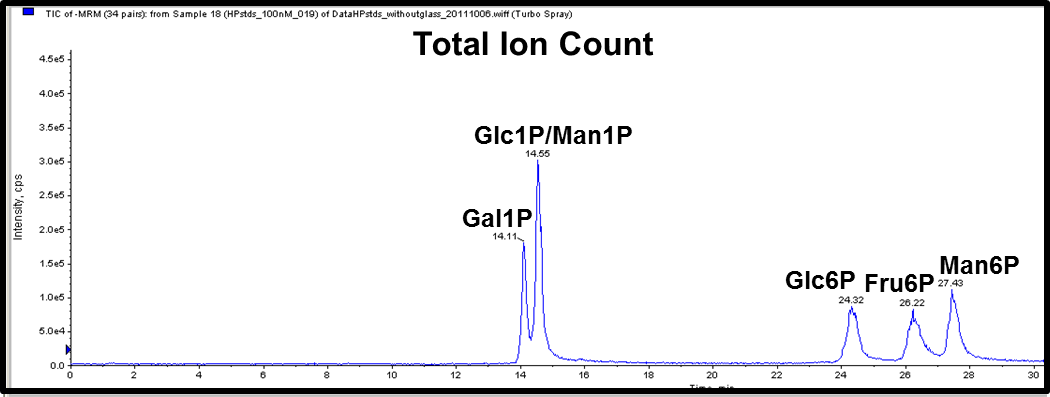Phosphorylation is the addition of a phosphoryl group (PO3)− to a molecule. In biology, phosphorylation and its counterpart, dephosphorylation, are critical for many cellular processes. A large fraction of proteins (between 1/3 - 2/3 of the proteome in eukaryotes) are temporarily phosphorylated, as are many sugars, lipids, and other molecules. Phosphorylation is especially important for protein function as this modification activates (or deactivates) almost half of the enzymes, thereby regulating their function. Protein phosphorylation is considered the most abundant post-translational modification in eukaryotes. Phosphorylation of sugars is often the first stage of their catabolism. It allows cells to accumulate sugars because the phosphate group prevents the molecules from diffusing back across their transporter. Phosphorylation of glucose is a key reaction in sugar metabolism because many sugars are first converted to glucose before they are metabolized further.
In living cells phosphorylation is associated with respiration, which takes place in the cell's mitochondria, and photosynthesis, which takes place in the chloroplasts. The energy released during metabolic or photosynthetic processes is captured in the energy-rich phosphate bonds of certain molecules, most commonly in the high-energy bonds of adenosine triphosphate (ATP). In the process of oxidative phosphorylation ATP formation is associated with respiratory uptake of oxygen. In this process a cell substance known as NADH (one of a variety of coenzymes) donates hydride ions (one proton and two electrons) to the first of a series of enzymes in the so-called electron transport chain. As the hydride ion is passed from one enzyme to another in the chain, energy is made available to power the formation of ATP from adenosine diphosphate (ADP) and inorganic phosphate. At the end, or lowest energy level, of the electron transport chain, the hydride ion combines with oxygen and a proton (hydrogen ion) to form a water molecule. The phosphorylation process is linked to cell metabolism in that metabolic degradation of food, e.g., glucose, allows formation of the coenzyme NADH. The electron transport enzymes are complex aggregates of cytochromes, i.e., proteins with iron-containing heme groups, and various coenzymes. The precise mechanisms by which chemical energy is coupled to ATP synthesis are not yet understood. In photosynthetic phosphorylation, or photophosphorylation, substances such as the reduced coenzyme NADPH also donate hydride ions to an electron transport system so that ATP is synthesized from ADP and inorganic phosphate in photophosphorylation; however, the coenzyme is produced from chemical reactions initiated by illuminated photosynthetic pigments instead of from metabolism of food molecules. The net result in phosphorylation of ADP is the formation of the high-energy molecule ATP, which the cell can use as a kind of universal energy currency to power many important cell processes, such as protein synthesis. Other phosphorylation reactions occur in cells, some without mediation by the electron transport chain, e.g., ATP is formed from ADP and inorganic phosphate in a reaction coupled to the oxidation of glyceraldehyde phosphate to phosphoglyceric acid.
Because of the influence that phosphorylation has on biological processes in general, a huge emphasis has been placed on understanding the biological role of phosphorylated compounds in the context of human disease. Current approaches to study phosphorylation include immunodetection, phosphoprotein or phosphopeptide enrichment, kinase activity assays and mass spectrometry. Creative Proteomics provides reliable, rapid and cost-effective phosphorylated compounds targeted metabolomics services by using LC-MS/MS method.
 Figure 1. Identification and quantification of hexose phosphates by LC-MS/MS.
Figure 1. Identification and quantification of hexose phosphates by LC-MS/MS.
Platform
- LC-MS/MS
Summary
- Identification and quantification of phosphorylated compounds.
Report
- A detailed technical report will be provided at the end of the whole project, including the experiment procedure, instrument parameters.
- Analytes are reported as uM or ug/mg (tissue), and CV's are generally<10%.
- The name of the analytes, abbreviation, formula, molecular weight and CAS# would also be included in the report.
| Phosphorylated Compounds Quantified in This Service | ||
|---|---|---|
| 2/3P glycerate | 6P gluconate | ADP |
| ADP-glucose | AMP | ATP |
| CDP | CMP | CTP |
| Deoxyxylose 5P | Erythrose 4P | Fructose 1,6bP |
| Fructose 6P | Galactose 1P | GDP-glucose |
| GDP-mannose | Glucose 6P | Glucose/Mannose 1P |
| Glycerol P | GMP | GTP |
| IDP | IMP | ITP |
| Mannose 6P | PAPS | PEP |
| Pentose Ps | ppGpp | Ribose 1P |
| Ribulose 1,5bP | Sedoheptulose 7P | Sucrose 6P |
| Trehalose 6P | UDP | UDP-arabinose |
| UDP-galactosamine | UDP-galactose | UDP-glucosamine |
| UDP-glucose | UDP-glucuronate | UDP-xylose |
| UMP | UTP | |
With integrated set of separation, characterization, identification and quantification systems featured with excellent robustness & reproducibility, high and ultra-sensitivity, Creative Proteomics provides reliable, rapid and cost-effective phosphorylated compounds targeted metabolomics services.
How to place an order:

*If your organization requires signing of a confidentiality agreement, please contact us by email.







